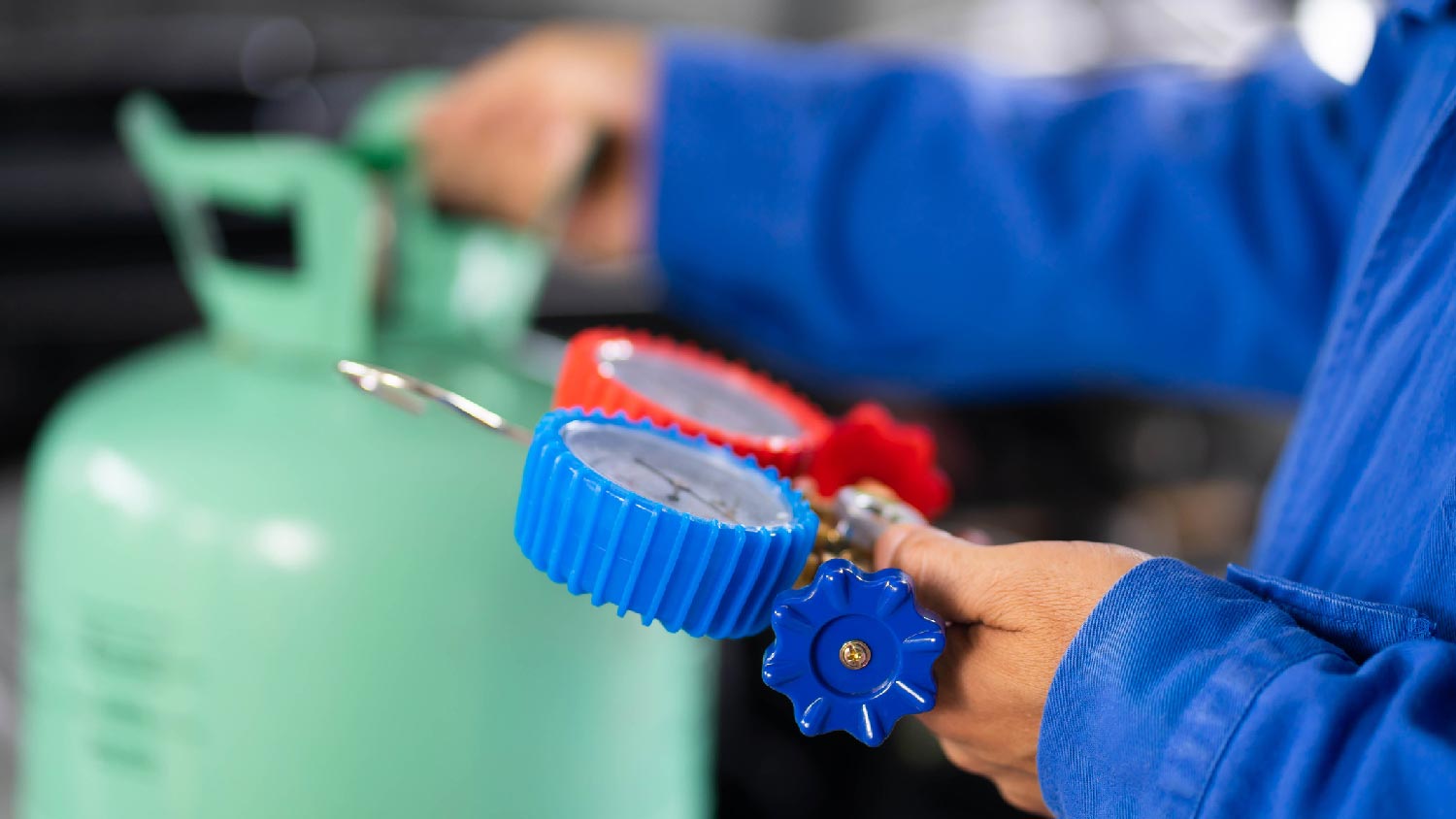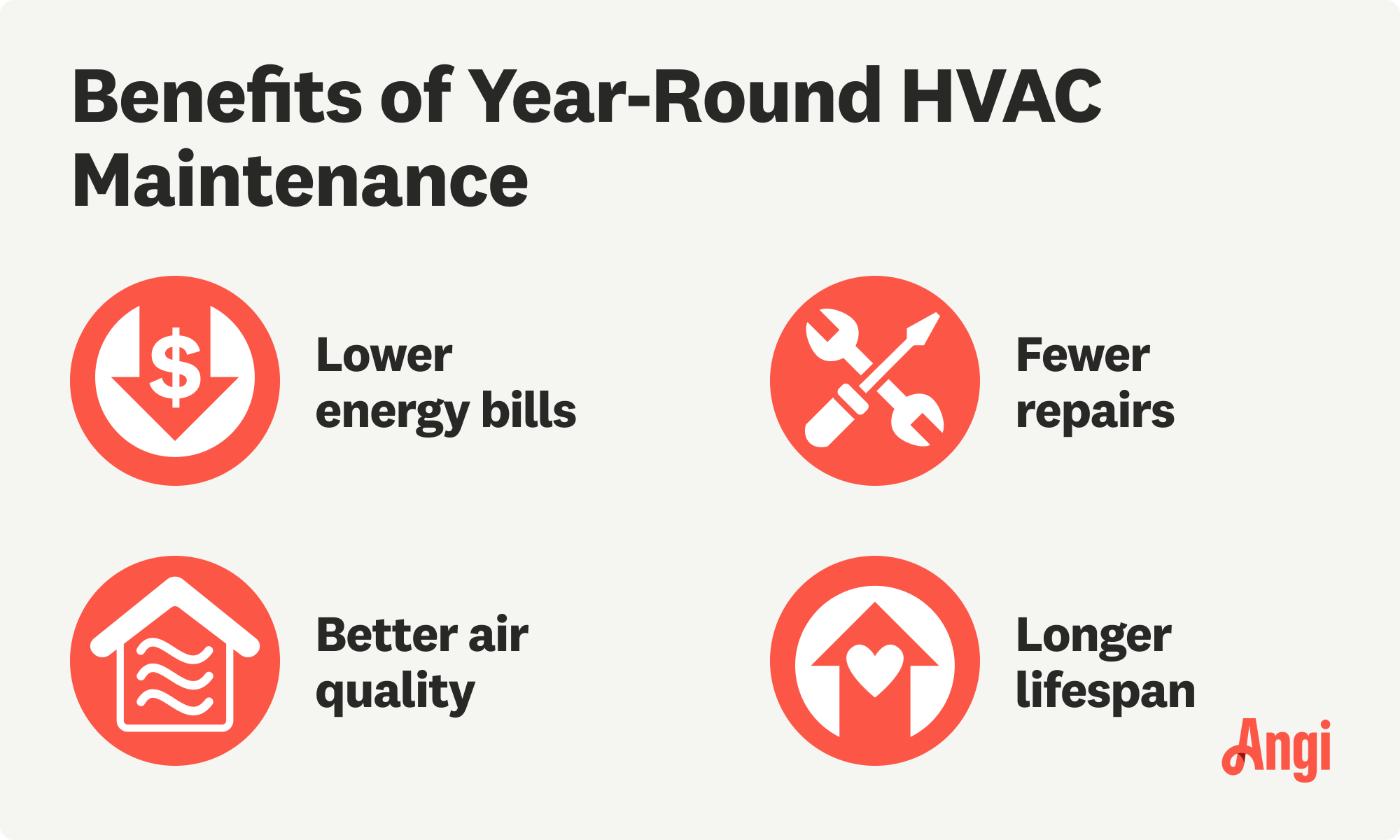
Whole-house humidifier costs vary based on the type and size of the unit, along with other factors. The price might be worth it for people living in dry regions.
Heating and air conditioning service costs depend on your project and location. Check with a local pro for your specific job.
The average AC recharge costs $100 to $600 per job, with pricing varying based on AC type, system size, and refrigerant needed.
Recharging a window AC typically costs $100 to $200 per unit, while mini-split systems range from $100 to $300 per unit and central AC systems run $150 to $600 per unit.
Refrigerant prices range from $12 to $80 per pound, with older R-22 systems costing $50 to $80 per pound and newer R-410A systems averaging $12 to $25 per pound.
Larger AC systems increase recharge costs, with refrigerant expenses averaging $100 to $350 for one ton and climbing to $500 to $1,800 for five tons.
Labor for an AC recharge typically adds $50 to $150 per hour, plus $100 to $300 per visit for leak detection and diagnostics.
The average cost of an AC recharge is $300. Typically, homeowners pay between $200 and $500, depending on several factors, including the AC type, size, and age, the cost of refrigerant, and more. If your AC unit isn’t performing well, it might be time for an AC recharge. Our guide will walk you through an average AC recharge cost.
You’ll need an AC recharge when an AC freon leak comes from your unit. Many air conditioning units use freon, a common refrigerant that circulates throughout your AC unit and provides cool air in your home.
However, when there is a freon leak, you’ll need a pro to diagnose the problem and refill the refrigerant. Your total AC recharge cost will depend on several factors: type, size, materials, labor, prep, location, age, and post-construction cleanup. Here’s what you can expect to pay for an AC recharge:
| Type of AC Unit | Cost Range for AC Recharge |
|---|---|
| Window AC | $100–$200 |
| Mini-split | $100–$300 |
| Central AC | $150–$600 |
Manny was very trustworthy and professional. He gave me a very fair price. Within 24 hours he had done his inspection and given me an estimate. It's the first time I talked to an HVAC company that didn't make me feel like I was getting overcharged. One of the other companies I spoke to was trying to charge 6 times the cost. He took lots of pictures and video and explained step by step what was done wrong by the other contractors and what he would need to do to fix it. He was able to do the work the day after I accepted the estimate. He completed all the work in one day. I am confident and very relieved to say that my HVAC system is set up properly.
The size of your air conditioning unit is measured in tons—and the larger your unit, the more freon it will typically need. Your AC unit will need two to four pounds of refrigerant for each ton. Here’s what you can expect to pay for refrigerant, depending on the size of your AC unit:
| AC Unit Size in Tons | Average Cost of Refrigerant |
|---|---|
| 1 | $100–$350 |
| 1.5 | $100–$500 |
| 2 | $150–$700 |
| 2.5 | $200–$900 |
| 3 | $250–$1,200 |
| 4 | $350–$1,500 |
| 5 | $500–$1,800 |

Depending on the type of freon used during your AC recharge, you could pay anywhere from $12 to $80 or more per pound.
| Type of Refrigerant | Average Cost per Pound | Use Case |
|---|---|---|
| R-22 | $50–$80 | ACs built before 2010 |
| R-410A | $12–$25 | ACs built between 2010 and 2025 |
| R-454B | $80 | ACs built 2025 or later |

An AC technician will charge between $50 and $150 per hour for labor. Although you can expect to pay $100 to $300 just for a pro to come out to find a leak, it depends on the complexity of the leak. For example, a pro may trace the leak back to your ceiling or walls if you have refrigerant lines running through your home. If that’s the case, you’ll need to factor in extra costs to open the wall and install drywall—which will run between $1.50 and $3 per square foot.
Sometimes, a freon leak is due to other issues with your air conditioning system. So, before a pro can perform an AC recharge, you may need to fix or repair these common issues:
Evaporator coil replacement: $600–$2,000
AC compressor replacement: $800–$2,300
Condenser coil replacement: $600–$2,400
New AC unit installation: $3,884–$7,938
Usually, homeowners living in rural areas pay less for AC services than those in metropolitan areas. However, because freon needs to be shipped, technicians living in rural environments may incur higher shipping and delivery fees—and will pass those additional costs on to the consumer.
Homeowners cannot legally remove freon from their homes, as it is an ozone-depleting substance. Instead, you’ll need your AC technician to responsibly recover the refrigerant from your property and dispose of it or remove the freon by draining the refrigerant lines. Here’s what you can expect to pay:
Freon recovery: $50–$150
Freon removal: $30–$100
Hiring a local AC recharge pro may cost more upfront, but it ensures your system is serviced safely and correctly. Air conditioning systems require precise refrigerant levels, and improper handling can damage the unit, reduce efficiency, or create safety and environmental risks. Professionals have the tools, training, and certification to recharge your AC properly and restore optimal cooling performance.
Recharging an air conditioner is a specialized HVAC service that requires technical knowledge and strict safety standards. Here are some of the top reasons to work with a pro:
Technicians can accurately diagnose low refrigerant levels and confirm whether a recharge is actually needed.
Pros are certified to handle refrigerants safely and in compliance with environmental regulations.
Working with a pro ensures the correct refrigerant type and amount are used.
Professionals can identify leaks or underlying issues that caused refrigerant loss in the first place.
Hiring a pro helps prevent system damage, improves efficiency, and extends the life of your AC unit.
You shouldn’t attempt to recharge an AC yourself, but a little preparation can help reduce service time and costs:
Clear debris and obstructions from around the outdoor condenser unit.
Note any symptoms, such as warm air, ice buildup, or hissing sounds, to share with the technician.
Replace or clean your air filter to improve airflow before the appointment.
Ensure easy access to both indoor and outdoor AC components.

Although you can’t change the cost of freon, there are ways you can save on AC recharge costs, including:
Call your insurance company or manufacturer’s warranty to see if AC recharge is covered under your current plan.
Check for AC rebates or tax credits.
Repair leaks when you notice your AC unit isn’t functioning correctly.
Get an annual AC tuneup.
Get at least three quotes from reputable AC repair companies.
Replace the filter on your AC unit to keep it running smoothly.
Keep all vents open and running to prevent blockages.
Have your pro check the type and size of your AC unit, as this will determine the refrigerant required and the tools needed.
If your budget allows, ask about additional services like system cleaning, filter replacement, or ductwork inspection to improve efficiency.
Be prepared for unexpected costs, such as leaks or damage to the system, which may require more extensive repairs or parts replacement.
Discuss your expectations for cooling performance with your pro, especially if you're noticing uneven cooling or poor airflow.
Home is the most important place on earth, which is why Angi has helped more than 150 million homeowners transform their houses into homes they adore. To help homeowners with their next project, Angi provides readers with the most accurate cost data and upholds strict editorial standards. We extensively research project costs to develop the pricing data you see, so you can make the best decisions for you and your home. We rely on reputable sources, including the U.S. Bureau of Labor Statistics, academic journals, market studies, and interviews with industry experts—all to ensure our prices reflect real-world projects.
Want to help us improve our cost data? Send us a recent project quote to [email protected]. Quotes and personal information will not be shared publicly.
From average costs to expert advice, get all the answers you need to get your job done.

Whole-house humidifier costs vary based on the type and size of the unit, along with other factors. The price might be worth it for people living in dry regions.

Switching from oil to gas heating could impact your savings. This guide will help you understand the cost to convert from an oil furnace to a gas furnace.

When your HVAC system is acting up, it could be the blower motor to blame. See how much blower motor replacement costs and what impacts the price here.

Tackling unwanted odors from indoor plants can be tricky. Learn how to use a carbon filter in your duct fan to improve air quality.

There are few things more important to homeowners than keeping their AC systems running. Use this guide on AC leak repair to keep your home cool and comfy.

Wondering who to hire for swamp cooler installation? Learn when to call an HVAC contractor, electrician, or handyperson, and what to expect.